Top Five Most Valuable Shipwrecks
Posted onList of top five most valuable cargo on shipwrecks
Shipwreck gold and silver hold a special place in many collectors’ hearts. Due to their dramatic history, rarity and against-all-odds type of survival – that it could ever be recovered from the depths of the ocean floor – these pieces are highly sought after within the numismatic world. We feature the top five most valuable shipwrecks in history.
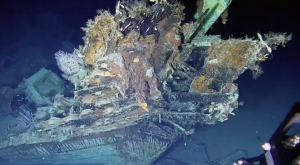
The San José: estimated $17-$20 billion
Three centuries ago, the English navy ambushed a Spanish treasure fleet loaded with billions of dollars (in today’s value) of gold, silver, jewel and other valuables. The Columbian navy located this shipwreck in 2015, yet the government fighting over who owns the treasure has kept the remarkably preserved hoard on the ocean’s floor. The Columbian government claims ownership of the ship and its treasure, yet under international law Spain still owns the San José.
What happened: On June 8, 1708, the San José, a three-masted galleon was attacked off Cartagena, Colombia, by a British squadron under the command of Captain Charles Wager. During the treacherous fight on the open sea, the San José was hit badly and sank with an incredible cargo of gold and silver coins, emeralds and other valuables.
Today, the Colombian navy says cannons, coins and gold bars can be seen lying on the seafloor in pristine condition. The ship lies on the ocean floor at a considerable depth of around 2,000 feet, which keeps it out of the sunlight that sustains marine organisms – and experts believe this is what has allowed the shipwreck and its value to be so well preserved.
Today, the exact location of the wreck is a closely guarded secret. Rare coin collectors can expect a salvage operation to occur at some time in the future, which would create an incredible buying opportunity for numismatic investors. Stay tuned.
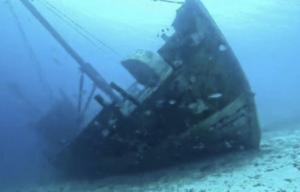
The Nuestra Senora De Atocha: $400 million
Experts call the Nuestra Senora De Atocha “greatest treasure ever found,” in terms of total value and difficulty to salvage. The ship was built in Havana Harbor and left the port on September 4 1622. La Nuestra Senora de Atocha was one of twenty-eight vessels in the Terre Firme Fleet, heading to Spain with trade goods and treasure. One day later on September 5, a massive hurricane struck the fleet just 60 miles off the coast of Cuba. That day, 260 souls lost their lives as the ship sunk in the deadly storm. Only five survivors were found, who clung to life by hanging onto the mizzen, which remained above the water.
In July 1985, Mel Fisher and a team of divers discovered the shipwreck off the Florida Keys. The valuable cargo included $400 million of treasure including 24 tons of silver bullion, ingots, and coins, 125 gold bars and discs and 1,200 pounds of silverware. The coins were minted in the New World Spanish colonies and the hoard also included Colombian Emeralds from the famed Muzo Mine.
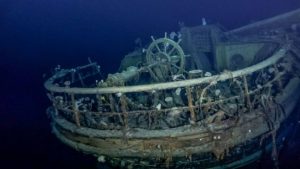
S.S. Central America: over $300 million
In September 1857, a 280-foot, wooden-hulled steamer called the S.S. Central America set sail for New York from San Francisco. Known today by numismatics as the fated “Ship of Gold” this steamer carried 578 souls and over two tons of gold and coins from San Francisco, worth an estimated $8 million at the time. Sadly, this legendary ship sailed straight into a Category 2 hurricane off the coast of the Carolinas.
She took on water fast and the 105 mph winds shredded her sails. The crew bailed water all night long valiantly fighting back against the monster storm. Two ships came to their rescue and transported 153 of the passengers to safety in lifeboats. Eventually, the captain fired his final rocket – a signal the ship would soon go under. Tragically, 425 passengers died as the ship sunk.
For 131 years, her treasure worth $300 million in today’s dollars – sat at the bottom of the ocean. In 1988, a team discovered the ship 160 miles off the coast at a depth of 7,200 feet.
A total of 346 Kellogg & Humbert ingots were recovered from the ocean floor. Blanchard placed a number of these stunning and historic gold ingots. One memorable ingot that Blanchard placed reveals the words: .892 fine $453.23. In 1857, gold was priced at $20.67 ounce.
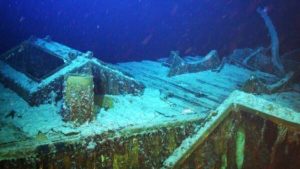
S.S. Gairsoppa: $210 million
In early 1941, WWII German submarines were hunting Allied ships and that is how the legendary S.S. Gairsoppa, a British merchant freighter met her destiny. The S. S. Gairsoppa was steaming from Calcutta, India to London, loaded with valuable cargo including 7 million ounces of silver bullion, tea and pig iron.
In mid-February, a North Atlantic tempest whipped the seas into a violent frenzy and in attempt to survive, the Gairsoppa set a new course for Galway, Island, away from the deadly storm. Moving slowly due to her valuable and heavy cargo – the ship was a sitting duck for the aggressive German subs on the prowl. A German submarine U-101 sunk the ship with one torpedo. It was February 17, 1941 when Gairsoppa sank in the North Atlantic, falling to the bottom of the ocean, nearly three miles below the water’s surface. Only the freighter’s second officer survived, all other souls onboard perished that day.
For 70 years, the Gairsoppa shipwreck sat undiscovered and untouched by man. Then, in 2013, Odyssey Marine Exploration identified the location of the Gairsoppa shipwreck and started the painstaking process to recover the silver bullion from the shipwreck on the ocean floor. The July salvage operation of the Gairsoppa was the deepest and heaviest recovery of precious metal from a shipwreck site in history.
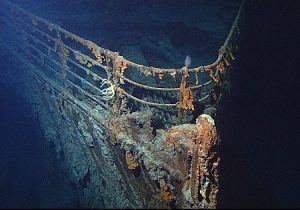
Titanic: $218 million
You may have seen the 1997 film Titanic which chronicled the epic story of the sinking of the RMS Titanic. Tragedy struck in April 1912 after Titanic hit an iceberg on her maiden voyage from England to New York City and sank. The human toll was high – more than 1,500 of the 2,224 passengers and crew aboard died.
Seventy three years later, a joint venture between Woods Hole Oceanographic Institution (WHOI) out of Woods Hole, Massachusetts, and French National Institute of Oceanography (IFREMER), Toulon, France set out to find Titanic. The objective was to test to the functionality of newly developed underwater imaging systems – which succeeded when they found the wreckage in September 1985.
While the Titanic was a passenger liner, the salvaged treasures included a substantial amount of cargo ranging from the mundane like mail and furniture to bullion, coins, and jewelry to a 1912 Renault Type CE Coupe de Ville motor car and even a jeweled copy of the Rubaiyat of Omar Khayyam.
Want to read more? Subscribe to the Blanchard Newsletter and get our tales from the vault, our favorite stories from around the world, and the latest tangible assets news delivered to your inbox weekly.







